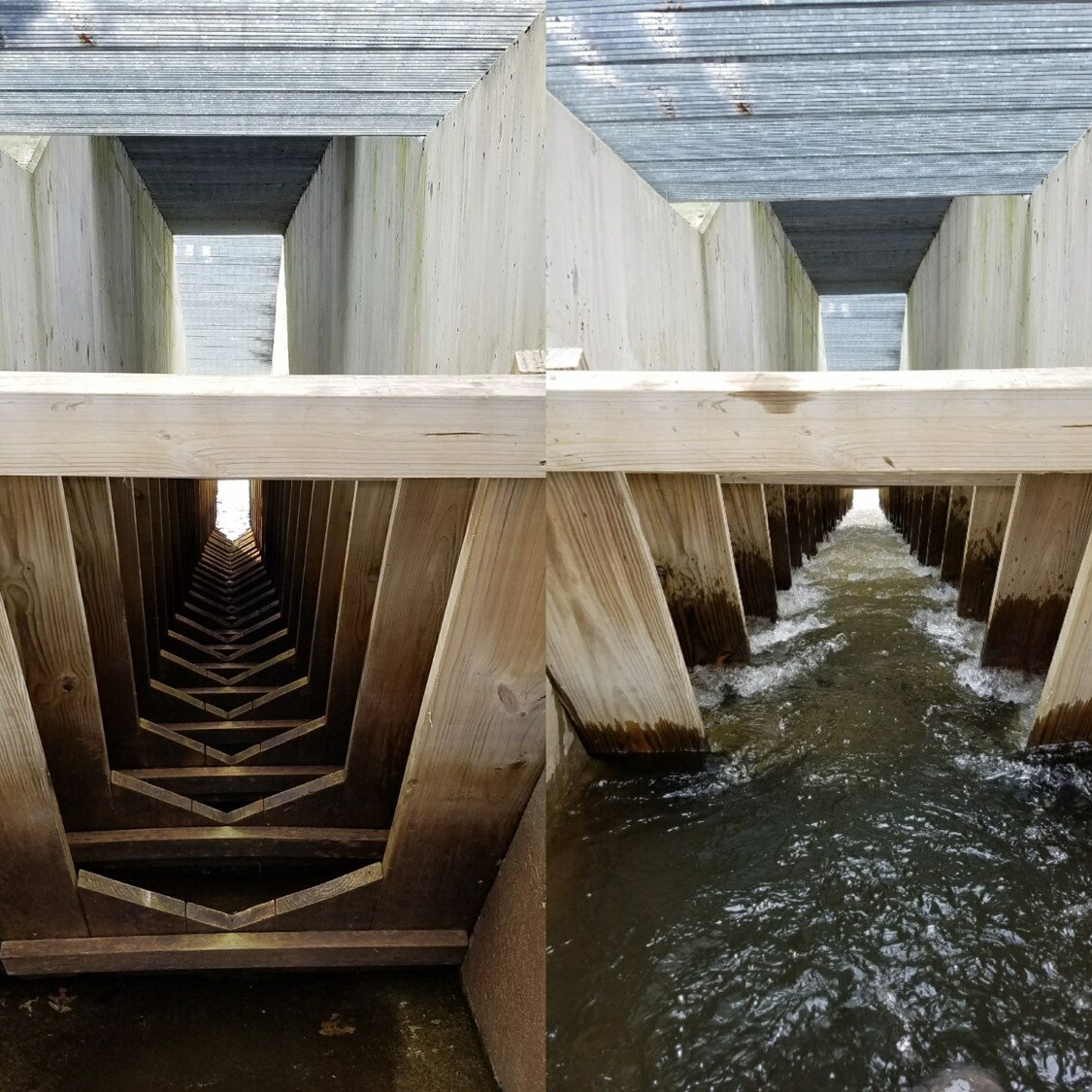Our Urban Wildlife Migration
What are river herring?
Illustrations by Diane Rome Peebles.
River herring (Blueback Herring and Alewife) are anadromous, meaning they live most of their lives in the ocean and return to freshwater rivers and lakes to spawn (lay eggs). River herring are silver in color and grow to be approximately 10 inches long.
Each spring, a population of herring loyal to the Mystic River return from Boston Harbor up the Mystic to breed.
Fun Fact: Unlike Salmon, which typically die in the streams where they spawn, herring return to the ocean and can make several trips upstream throughout their lifetime.
Designed by Amber Christoffersen
An estimated 470,000 river herring swam seven miles up the Mystic River to the Upper Mystic Lake in 2023. The average female produces 60,000-100,000 eggs each time she spawns. Young (fry) wait until the summer to make their seaward migration.
Fun Fact: Alewives seek out upstream ponds and lakes to spawn, whereas Bluebacks prefer the main stem sections of rivers and streams.
River herring play a crucial role in the freshwater and marine food webs. For example, they are prey for seals, and other marine mammals in the ocean; seabirds, cormorants, ospreys, herons, and eagles; tuna, cod, trout, and several species of bass; mink, fox, raccoon, skunk, weasel and turtles. As zooplankton eaters, they turn an inaccessible resource into the food for a large number of species humans consume, enjoy and profit from.
Fun Fact: Fewer than 1% of fish species are diadromous (migratory between salt and fresh waters).
What is the Status of Herring?
© Shervin Azad Arya
River herring have experienced a decline in population due to overfishing, trawl-fishing methods, physical obstructions to migration like dams, poor water quality, and inadequate spawning habitat. In 2006, NOAA National Marine Fisheries Service listed river herring as a species of concern.
Success story on The Mystic!
Since 2012, the number of herring migrating up the Mystic River has grown from 198,000 to around 500,000. This remarkable restoration success story is the result of improved fish passage at the Mystic Lakes Dam in 2012 and at the Center Falls Dam in 2018, resulting in 200+ acres in expanded habitat for herring to spawn. The great news is that there are additional improvements coming to the fish passage at Horn Pond in the coming years.
Beyond improved passages, clean water is vital to healthy herring habitat. Read about the water quality in the Mystic River and its tributaries.
Despite the statewide fluctuations, the Mystic’s population has remained fairly steady since 2015. The decline in 2020 probably reflects lower reproductive success in the severe drought conditions of 2016. Read more about the latest numbers here.
What to learn even more?
Hear from our watershed scientist, Andy Hrycyna, as he outlines the ecological success story of herring in the Mystic here.
What can you do?
One fish, two fish! Be a citizen scientist. It's easy - help count the number of river herring by watching short videos recorded at the Upper Mystic Lake Dam in Medford, MA. Every video watched provides important data on the local population of this migratory fish.







